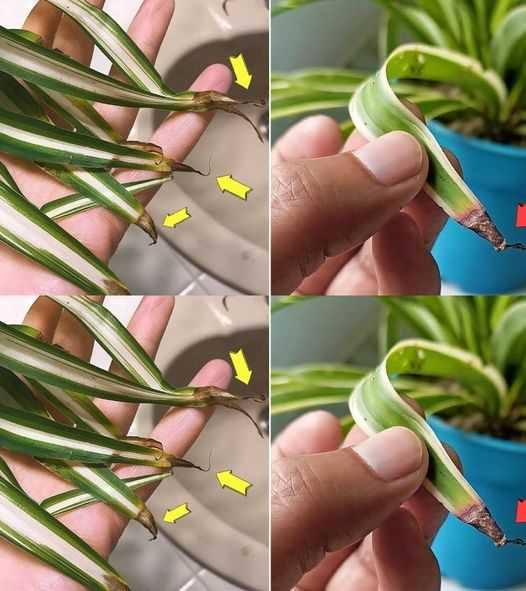ADVERTISEMENT
Why Do Spider Plant Tips Turn Brown? Here’s What You Need to Know
If you’re a proud owner of a spider plant (Chlorophytum comosum), you may have noticed that sometimes the tips of the plant’s long, arching leaves turn brown or dry out. It’s a common issue for many plant parents, but what causes this, and more importantly, how can you fix it?
In this article, we’ll explore the reasons why spider plant tips turn brown and offer some practical solutions to help your plant thrive.
Understanding Spider Plants: A Quick Overview
Before we dive into the causes, let’s take a quick look at the spider plant itself. Spider plants are popular houseplants known for their lush green leaves and their ability to produce “babies,” or small plantlets, that dangle down like little spiders. They’re incredibly resilient and relatively easy to care for, which is why they’re so beloved by plant enthusiasts.
However, like all plants, they can develop issues if their care needs aren’t met. One of the most common problems is the browning of leaf tips, which can be an indication that something isn’t quite right.
Common Reasons for Brown Tips on Spider Plants
1. Overwatering or Underwatering
Both overwatering and underwatering can cause stress to your spider plant, leading to the browning of leaf tips. Spider plants prefer to dry out a bit between waterings, but they don’t like to be kept too dry for long periods. On the other hand, sitting in waterlogged soil can cause the roots to rot, leading to unhealthy plants.
- Overwatering: If you notice the tips of your spider plant turning brown, it could be a sign that the plant has been sitting in too much water. When the roots can’t breathe, the plant’s ability to take up nutrients is compromised, and the leaf tips may start to show signs of stress, including browning.
- Underwatering: If you haven’t been watering your spider plant enough, it may start to suffer from dehydration, which can also cause brown tips. The leaves will first show signs of dryness and crispness at the edges or tips.
Solution: Make sure your plant is in a pot with good drainage, and water it thoroughly when the top inch or so of soil feels dry. Try not to let the plant sit in standing water, and avoid letting it dry out completely for too long. A good rule of thumb is to water once a week, but this can vary based on the climate and season.
2. Poor Water Quality
Spider plants are sensitive to the quality of water they receive, and using hard water or water with a high mineral content can lead to brown tips. Hard water contains minerals like calcium and magnesium that can accumulate in the soil over time and cause a build-up of salts around the roots.
Solution: If you live in an area with hard water, consider using distilled or rainwater, or let tap water sit out for 24 hours before using it. This will allow some of the chlorine and fluoride in tap water to evaporate, which can help reduce the stress on your plant.
3. Low Humidity
Spider plants naturally thrive in moderate to high humidity, and dry air can cause the tips of their leaves to turn brown. This is especially common in the winter months when indoor air tends to be dry due to heating.
Solution: To raise the humidity around your plant, you can try placing a humidifier nearby, misting the leaves occasionally, or grouping your plants together to create a microclimate with higher humidity. If you don’t mind a little extra effort, placing your plant on a tray filled with pebbles and water (without the plant sitting directly in the water) can also help increase humidity around the plant.
4. Too Much Direct Sunlight
While spider plants can tolerate a range of lighting conditions, they generally prefer bright, indirect light. Too much direct sunlight can scorch their leaves, causing the tips to turn brown and crispy. This is especially common in hot summer months or if the plant is placed too close to a window with intense afternoon sun.
Solution: To prevent browning, make sure your spider plant is placed in a spot with indirect light. A bright windowsill with sheer curtains or a spot a few feet away from a sunny window is ideal. If your plant is already scorched, trim the brown tips, and consider moving it to a more suitable location.
For Complete Cooking STEPS Please Head On Over To Next Page Or Open button (>) and don’t forget to SHARE with your Facebook friends
5. Over-fertilization
Spider plants don’t require a lot of fertilizer, but applying too m
